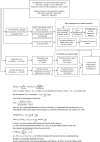Mapping the evolution of entrepreneurship as a field of research (1990-2013): A scientometric analysis
- PMID: 29300735
- PMCID: PMC5754054
- DOI: 10.1371/journal.pone.0190228
Mapping the evolution of entrepreneurship as a field of research (1990-2013): A scientometric analysis
Abstract
This article applies scientometric techniques to study the evolution of the field of entrepreneurship between 1990 and 2013. Using a combination of topic mapping, author and journal co-citation analyses, and overlay visualization of new and hot topics in the field, this article makes important contribution to the entrepreneurship research by identifying 46 topics in the 24-year history of entrepreneurship research and demonstrates how they appear, disappear, reappear and stabilize over time. It also identifies five topics that are persistent across the 24-year study period--institutions and institutional entrepreneurship, innovation and technology management, policy and development, entrepreneurial process and opportunity, and new ventures--which I labeled as The Pentagon of Entrepreneurship. Overall, the analyses revealed patterns of convergence and divergence and the diversity of topics, specialization, and interdisciplinary engagement in entrepreneurship research, thus offering the latest insights on the state of the art of the field.
Conflict of interest statement
Figures







References
-
- Cantillon R. Essay on the Nature of Commerce. London: MacMillan; 1755.
-
- Smith A. An Inquiry into the Nature and Causes of the Wealth of Nations. London: Strahan and Cadell; 1776.
-
- Knight F. Risk, Uncertainty and Profit. New York: Hart, Schaffner and Marx; 1921.
-
- Schumpeter JA. The Theory of Economic Development: An Inquiry into Profits, Capital, Credit, Interest, and the Business Cycle. Rugers, New Jersey: Transaction Publishers; 1934.
-
- McClelland D. MCCLELLAND DAVID c. Journal of personality and social psychology. 1965;1(4):389–92. - PubMed
Publication types
MeSH terms
LinkOut - more resources
Full Text Sources
Other Literature Sources

